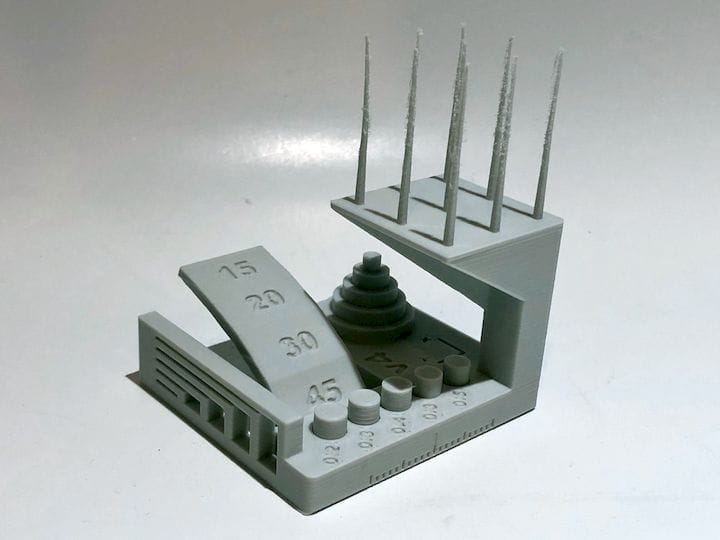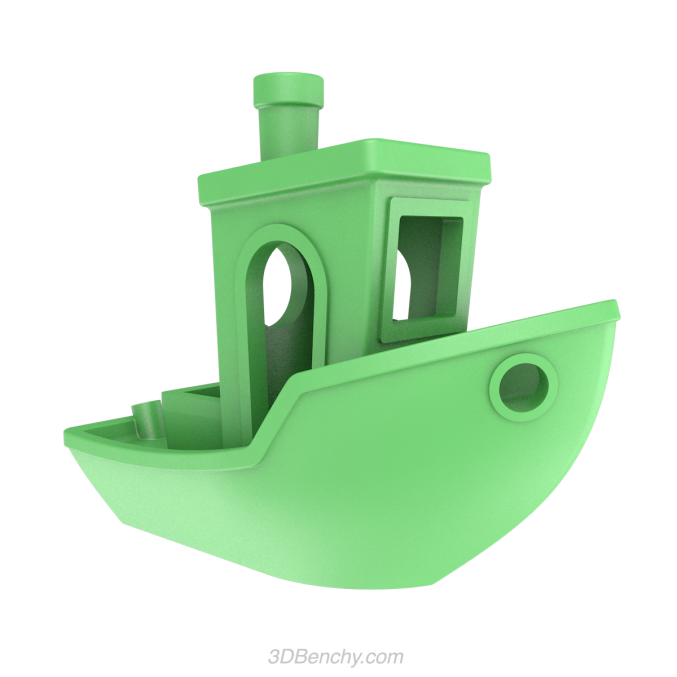![Sample print of the new Autodesk / Kickstarter 3D print test model [Source: Fabbaloo]](https://fabbaloo.com/wp-content/uploads/2020/05/image-asset_img_5eb0a72516237.jpg)
Kickstarter announced a new set of tests for 3D printers that appear on their site.
Developed in conjunction with 3D CAD software maker Autodesk, the new set of test models can be used to judge the capability of new 3D printers being launchd on Kickstarter. This will help a persistent problem in that you never know for sure what print quality you could expect from a given machine.
There are already a number of standard 3D printer tests, the most common being the well regarded #3DBenchy, developed years ago by Sweden-based Creative Tools. This fun 3D model ingeniously includes a number of structural features that silently test the capabilities of any 3D printer.
However, the venerated #3DBenchy doesn’t test quite everything, and thus there are always other unusual 3D models to do so. However, none has gained the reputation of #3DBenchy and thus their appearances on product launches are intermittent to be generous.
The new test from Autodesk may address this issue.
Technically, the test is a rather complex and unnatural object, quite unlike the #3DBenchy. However, as you can see at top there are definitely more structural features being tested with its geometry.
I’ve printed this object and while it is quite a bit larger than the #3DBenchy and thus takes longer to 3D print, it does test more extreme aspects of printable geometry. The top part, for example, is a terrific test of stringing. One interesting part of the test is the cylindrical elements on the bottom: the test attempts to resolve the smallest possible gap, and so the cylinders fall out of each space unless the gap is compromised by poor printer resolution. In my case the smallest gap, 0.2mm, held the final cylinder. Overall my test came out quite well on a Prusa i3 MK2.5 using the excellent 3D4MAKERS Facilan filament.
![Side view of the new Kickstarter/Autodesk test 3D model [Source: Fabbaloo]](https://fabbaloo.com/wp-content/uploads/2020/05/image-asset_img_5eb0a72578235.jpg)
The file is being distributed on GitHub at the moment, and it appears they may be developing equivalent versions for SLA and SLS 3D printing processes. It’s not clear when these will appear, as they say “Coming soon!”
The reason behind Kickstarter’s motivation for this new test is the general uncertainty of 3D printers being marketed through their site. Some campaigns may post extensive images of test prints, but others may not post anything. Kickstarter explains:
“Kickstarter already requires that 3D printer creators demonstrate the current functionality of their devices through videos of prints in progress and photos of finished prints. However, creators often showcase different types of prints, from geometric vases and abstract art to more common tests like the 3D Benchy. This makes it hard to compare the performance of various machines.”
They hope the new test will be used by 3D printer campaigns in the future to provide some form of comparison between machines. However, it seems that use of the test is entirely optional and likely would only become a defacto standard if sufficient participants use it so that it becomes an expectation of buyers. I’m not so sure that will actually happen.
![Oblique view of the new Kickstarter / Autodesk 3D printer test 3D model [Source: Fabbaloo]](https://fabbaloo.com/wp-content/uploads/2020/05/image-asset_img_5eb0a725c69e7.jpg)
Nevertheless, this is a great step forward in some respects. However, it is certainly not an assurance of a successful 3D printer purchase. There are many more factors involved in the scenario beyond print quality. For example, who cares if the quality is great if you never receive the machine you ordered?
We discussed many of these factors in our crowdfunding checklist that examines many of the reasons why launch campaigns fizzle out, leaving their backers in the lurch.
And even then, I’m not so sure the test will satisfy buyers, as there are a number of issues:
-
The quality of the filament used can vary significantly. If a manufacturer used high-quality filament and a user does not or does not have access to such filament, they won’t get the same results.
-
The print parameters may vary between installations, as aspects such as ambient temperatures and wind drafts can affect print quality. And as any 3D printer operator knows, tweaking to the ultimate quality is a very time consuming and tedious process that many users will simply never accomplish.
In other words, an image of a great test 3D print on a campaign page means only that in ideal conditions you might be able to achieve the same result. It does not mean you will necessarily be able to achieve the same.
As in most situations, there are many factors to consider. But here, Kickstarter has at least attempted to standardize one of them.
Via Kickstarter and GitHub










